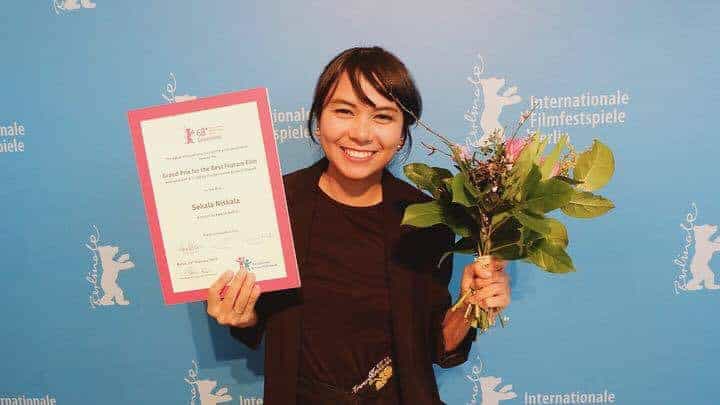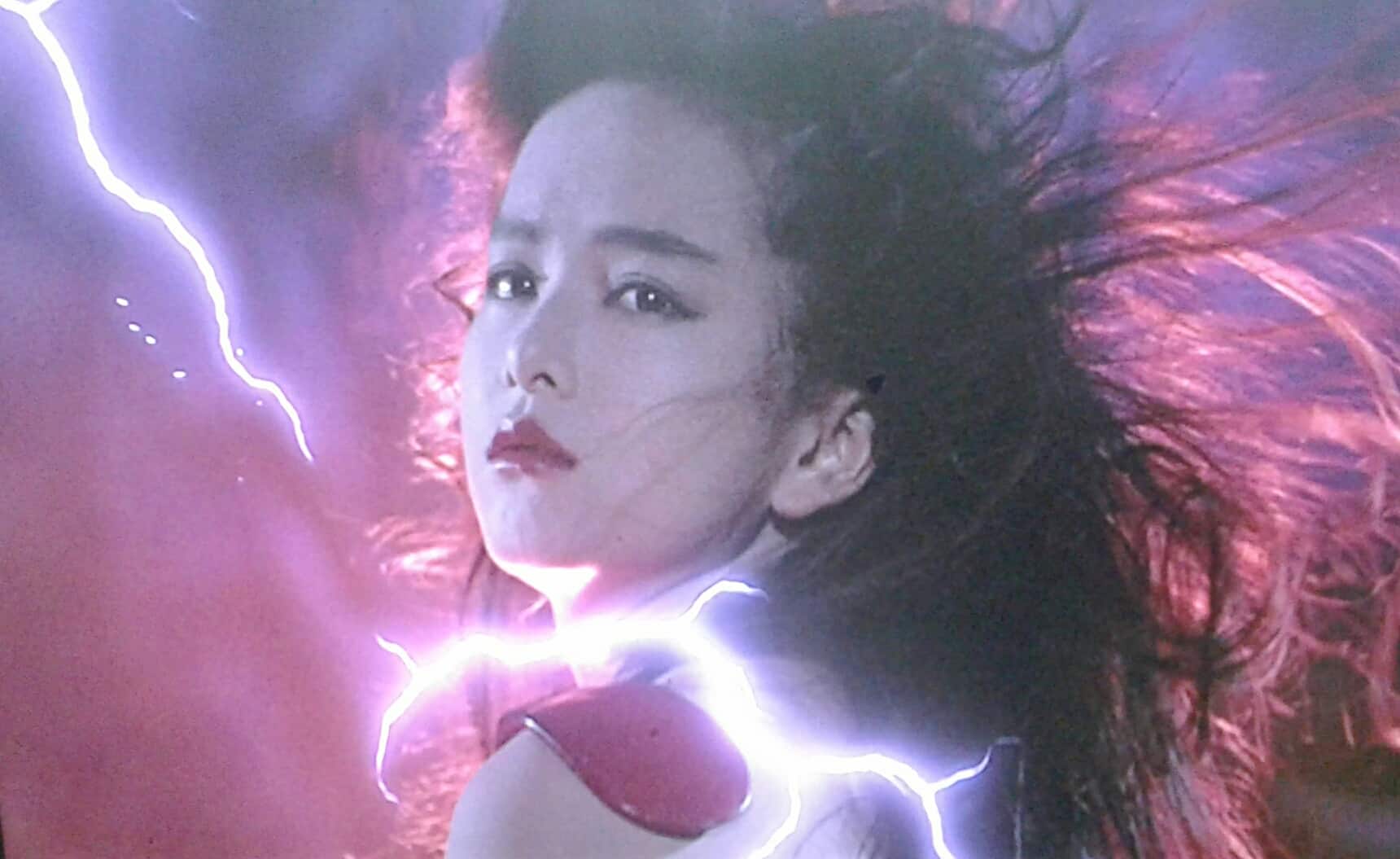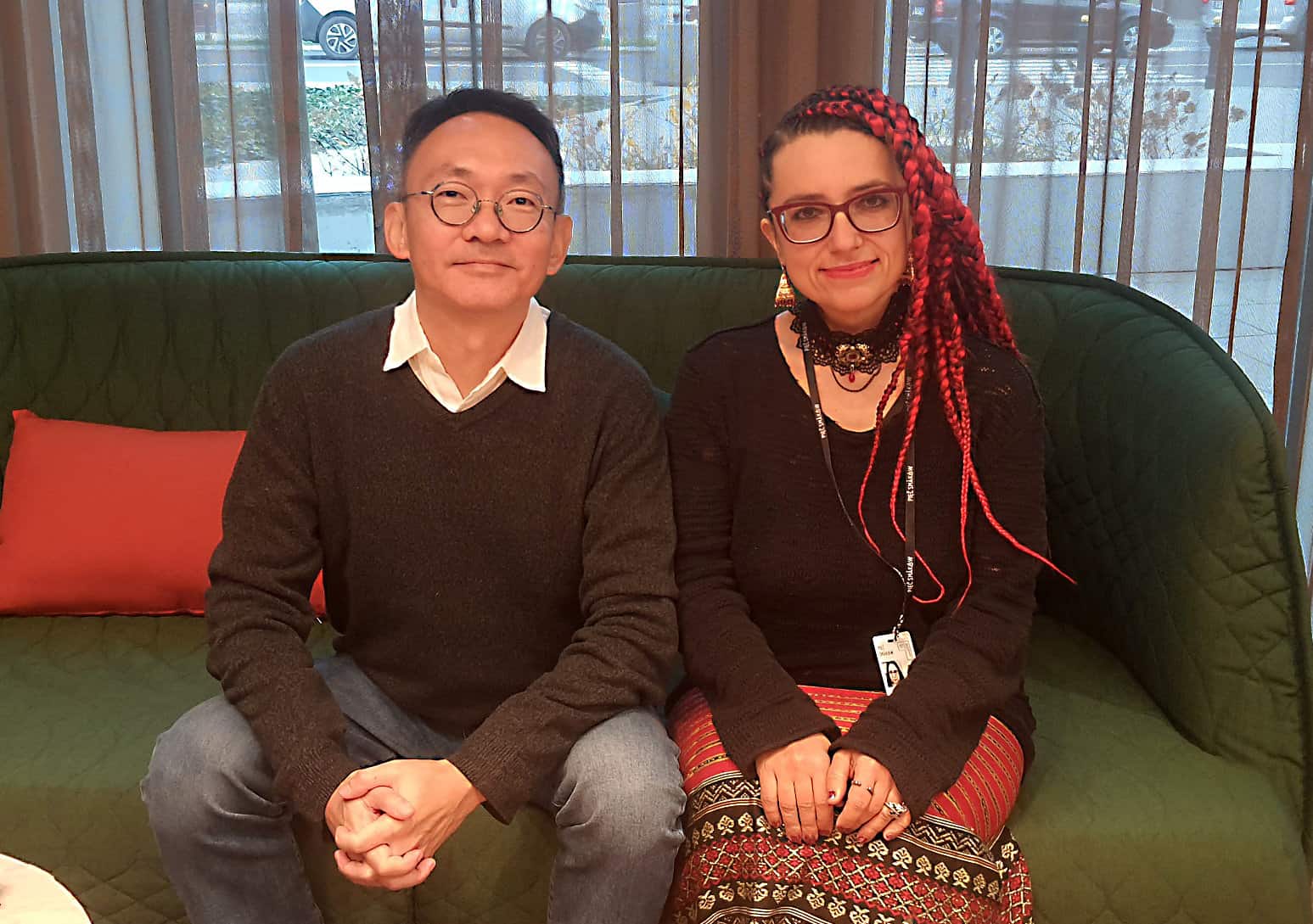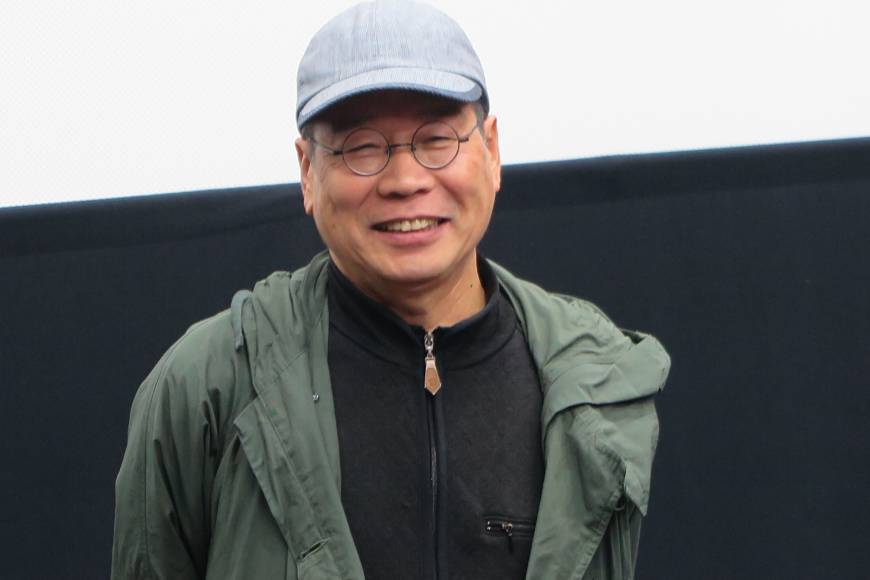Kamila Andini, who was born in 1986, has studied sociology. Her interest in social affairs is also present in her work: Andini has said that in her films, she wants to explore diverse Indonesian identities. Her first full length feature film “The Mirror Never Lies” (Laut Bercermin, 2011) was a visually impressive coming of age story of a young fatherless Bajau girl in a fishing community. “The Seen and Unseen”, is Andini's second full length feature film, in addition she has directed two short films. Kamila Andini's father, Garin Nugroho, is perhaps the most famous Indonesian film director, and he has been involved in producing Andini's films.
On the occasion of The Seen and Unseen screening at Helsinki Cine Aasia Film Festival 2018, we speak with her about her family ties, her studies, the philosophy behind the film, child actors, and many other topics
You are the daughter of Garin Nugroho, one of the most famous Indonesian directors. How has this relation affected your choice to become a filmmaker, and how has your father influenced your career? You are also married to Ifa Isfanyah. Can you tell us a bit about living with someone who is also a director?
This is such a big question for a first question..
Well first of all, it was not an easy choice to actually make a decision to be in the same field as my father, since he is a very good one in that field. Since the beginning, people always tell you that you have to be different and more successful than him. They said something like ‘you should make commercial films since he makes arthouse films', ‘you shouldn't talk about culture since he always talks about that', or simply ‘my film is just an accident'. It was very hard in the beginning of my career since I didn't even know what kind of film I was actually good at, and that's why I wanted to make films, just to create, and what I needed was to be honest to myself.
At this point, I asked myself why do I have to make a film that everyone wants me to make? I want to make the films that I want to make. I want to be myself.
My love for art, social and culture was influenced by my parents. Since I was born, I grew up with their choices, their way of thinking and their taste, especially my father's. His influence is something I cannot describe, it's like the air I breath since I was born.
Married to someone like Ifa makes everything complete and connected. One thing I realized as a female filmmaker is my limited space to be both filmmaker and a mother. There are a lot of sacrifices, a lot of difficult choices when you have a dream to make films, but you also have to deal with motherhood. Ifa as a director knows exactly who I am as a director, what kind of film I want to make, my dreams. As (also) a director, he understands that many things are worth all of the hard work and the crazy time management for the sake of cinema.
You have a degree in sociology from Deakin University. How have your studies influenced your filmmaking?
Human relations is something that I always want to talk about in any kind of medium I use. When I was in high school, I learned photography and that's what I always want to portrait, making an essay photo about someone, telling their stories, portraying their culture background and problems is always something that I am keen on. So, I was always interested in learning sociology, but after my studies, I just became more and more sure of my approach, my subject, and the stories I wanted to tell

I know that “the seen and unseen” are two key concepts in Balinese philosophy, could you say a little bit about why did you want to turn these philosophical ideas into film?
At first, I only wanted to talk about life, death and children. I watched the cockfighting dance of this community Bumi Bajra in Bali, made by my choreographer friend Dayu Ani, that I think is very interesting to talk about death in that playful way with children as a subject.
But then, later on, I found this philosophy in Bali about Sekala Niskala, talking about duality and the circle of life. That death is part of life. It becomes something that tied every idea together. For me, its not common to find something that you could explore in many ways, not just in its character and stories, but in every aspect of audio and visual, and this became part of the story.
It's a very deep philosophy, so all of the elements of the film should ‘speak' in order to reveal the depth of the concept.
I was curious about the role played by the female characters in your film. It seems to me that they have a more intimate relationship with the traditional Balinese art forms. (And the father figure is almost non-existent in this film) Is this something that came from the source material? Or did you simply want to empathize more on the female characters?
Actually, to be honest, developing male characters is one of my weaknesses. I understand woman characters very well, with their complexity, depth and layers. Woman is full of layers, this is what I'd like to work on when I make film about them. To show all of this complexity and depth that even maybe, for this patriarchal world, sometimes it doesn't make sense or seems weird.
That is also why, most of the time, I have unbalanced character development in my films. This is actually technical but it's true (other than the fact that I am also a feminist). It's something I need to work on and learn more and more.

The film implements much surrealism. Why did you choose this approach and why did you decide to portray the world of children in that fashion?
Surrealism is actually more of a question to me rather than a movement or a concept. What is surrealism really? For me the reality in Indonesia is very surrealist. I think today the world has become borderless, art is borderless. This question could be answered in many different ways. I choose to try exploring the question of surrealism by portraying its reality. My own reality. And seeing surrealism from children's point of view is seeing the pure and honest element of it.
How difficult was it to work with child actors? In general, how was the casting process like for the film?
I love to work with children actors. I love to use their actual characters in my stories. I like to put them as they are, and put different stories in their life.
But the casting was hard. I want children who have that inner acting and this is not easy to find. I found Tantri just a month before we shot. My criteria was hard, I had to find a little girl who could sing, would have good ability on dancing (not an easy choreography to do and I don't want to cheat), but is also composed, and have this layer of expression, and inner feeling too. My assistant director kept saying this girl lives only in my head. She couldn't believe that she is actually alive when we found Thaly Kasih who played Tantri.
Can you tell us a bit about the locations the film was shot? How was the shooting like? Any memorable episodes, good or bad?

This film is a microbudget film with an ambitious visual exploration. So I had to find a location that can portray all the things I wanted, but I couldn't have many locations like a feature film does, budget wise. For months I've been going around Bali myself (since we couldn't afford location manager working during development and preparation) to find this house in a paddy field, near a hospital, and a housing area for our accommodation.
So that's how we shoot, we rented two houses near the house location so we could just walk to the location every day. It was sort of like a camping, we just explored everything nearby. All the actors live in Bali so we didn't need to fly them. We shot mostly in daylight since we didn't have much lighting equipment, almost all the night scenes was day for night. And the film was actually shot with A7S Sony DSLR camera.
I was amazed how we could put everything together in a rainy season and 14 days of shooting. The shooting is really the seen and unseen.
Anggi Frisca's work in the cinematography of the film is impressive. Can you tell us a bit about your cooperation with him?
I worked with Anggi Frisca in my short film, and I really like working with her. Even though she is a DOP, her approach is also very organic. She knows what the story needs and don't need. She believes in a process and she puts her heart in that work in any kind of condition.

I've also seen Surya's “Marlina the Murderer in Four Acts” recently, and I really enjoy the way she works with and renews the Western genre. I was curious that if you were asked to make a genre film, which genre will you pick?
I am actually up to any genre, it depends on what the story needs. I just serve the story. But actually I am not very good in horror films. I could say that “The Seen and Unseen” is my own definition of horror film. Haha. It's not at all the seen world versus the unseen world, but they live together in harmony.
If you were asked to give a lecture on an Indonesian film, which one would you pick? And why?
I would talk about one of my father's films and my point of view as a kid when he made it. It would be a letter to an angel.
I notice that there are many Asian directors who are interested in setting their stories in other Asian countries. If you were asked to set your next film in another part of Asia, where would you choose? And why?
I would say Central Asia. I am fascinated with their language, culture and landscape.
What is the situation with Indonesian films at the moment?
Its actually very promising. We have more than 100 films made every year, and Indonesian audience loves to watch Indonesian films, so we have a good number in the box office. Last year, we have several films that worked really well in film festivals too.
Although we also have much work to raise the industry. We still need more screens to reach every part of Indonesia. To make films accessible for the 200 million people. To have room for artistic films. And many other things.
Which are your favorite directors/films?
Its always a very hard question, to pick one out of many. But I gues Kim Ki Duk's and Mohsen Makhmalbaf are two of the filmmakers that inspired me a lot.
What are your plans for the future?
I am writing my next film right now. My next film will talk about teenage marriage in Indonesia. This is quite different than my previous films. But well it's still in an early stage, many things could happen along the way















